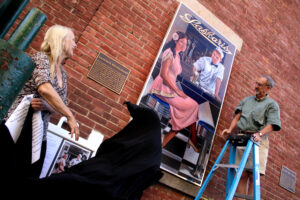In Search Of (Oneonta!) History
GOHS' Brzozowski Took Deep
Dive Into Adopted City's Past
By JIM KEVLIN • Special to www.AllOTSEGO.com

Even as a boy growing up in Antrim, N.H., young Bob Brzozowski befriended his elderly neighbors, entranced by stories they told about the good ole days in their rural community.
When, age 9, he got a stamp collection book for Christmas, it piqued his interest in the larger world, from emerging African nations to Great Britain’s islands in the Atlantic and Pacific.
A broadening world view and the interest in everyday people have guided him, he’ll tell you, in 17 years at the helm of the Greater Oneonta Historical Society, six as president and 11 as executive director.
“People’s everyday lives are history,” he said in an interview after announcing last week that he will retired on Monday, Jan. 31.
Graduating from St. Anselm’s College, he joined the Peace Corps in Brazil, but bristled when a boss told him, “My goal is to have a television set in every household.” That was the last thing the farmers he was advising needed, he said.
After a carpentry stint back in New Hampshire – he also worked on George McGovern’s campaign, driving Shirley McLaine to a political event – he pursued an advanced degree at the University of the Americas in San Andrés Cholula, near Puebla, Mexico.
Naturally, his thesis dealt with the challenges of regular folks: In this case, how a local Aztec tribe, the Nauhas, was adapting to Mexico’s modernization.
You have reached your limit of 3 free articles
To Continue Reading
Our hard-copy and online publications cover the news of Otsego County by putting the community back into the newspaper. We are funded entirely by advertising and subscriptions. With your support, we continue to offer local, independent reporting that is not influenced by commercial or political ties.

